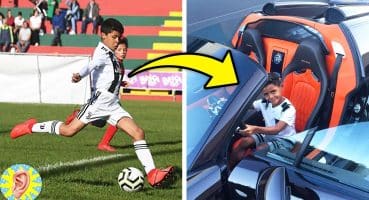Located at 1649 El Prado, San Diego, CA 92101
Close to the center of Balboa Park is the Casa de Balboa.
Inside is the Museum of Photographic Arts. If you walk down the corridor on the left you see a small cafe
which conceals a hidden secret at the end of the stairs that lead below.
As we climb down, there are two signal flags which imply what lies beneath.
The San Diego Model Railroad Museum welcomes guests year round and gives us an opportunity to take a step back in time.
Why do trains make us think of a better time or a better place?
A train itself seems to embody an escape from the world and yields the promise of a new beginning.
Why do trains have the power to hold our fascination and take us not only on a journey across the landscape of Earth but also across the inner terrain of our imaginations?
Is it the nostalgia of travelling at a slower pace in an older world or the allure of riding through the countryside to embark on a grand adventure?
Trains function just like any other form of transportation. To get from one place to another they pick us up at a departure point and drop us off at our destination.
If you travel by plane, you are almost guaranteed the fastest travel time.
If you sail by cruise ship, you’ll have some of the best service and room accommodations.
If you drive an automobile, you have the freedom to make your own schedule. Each has its own drawbacks, too.
Flying and sailing lack engaging scenery while underway. By car, you must concentrate on the traffic and road conditions; nevermind the time to look around.
A train is different. It’s neither the fastest, nor does it have swimming pools, deck lounges, or ice skating rinks. It doesn’t allow you the freedom to drive wherever you want whenever you want.
It does, however, give riders access to see unseen parts of the countryside or inner city, with the memorable experience of taking a journey to improve one’s place in life;
whether literal or figurative.
In the same way, model trains capture our attention through the wonder and mystery of locomotion.
For the select few, they have the power to build not only a train and its tracks, but the layout surrounding the train, and all the small details showing scenes of everyday life.
These model railroaders get a chance to become a creator of worlds, rather than just an observer or participant.
The San Diego Model Railroad Museum was officially opened in 1982 with a mission to “research, collect, preserve, and present
the heritage of American railroading using educational programs, displays, toy trains, and scale models of California railroads.”
The origin of the Model Railroad Museum comes from a series of unfortunate events that happened in the years prior.
In 1962, the La Mesa Model Railroad Club was incorporated by a group of teenagers along with support from their parents.
They were housed in an old firehouse called Nebo Hall
and often surveyed real trains in person to reproduce accurate representations of the railroads and equipment in HO Scale layouts.
We’ll talk about the different model train scales or sizes in a bit.
Another modelling group called the San Diego Society of N Scale set up in the House of Charm in Balboa Park.
Their N scale models were roughly half the size of La Mesa’s HO scale layouts and could fit more railroad into a smaller space.
In 1978, arson fires consumed Balboa Park’s Old Globe Theater and the Electric Building which housed the Aerospace Museum.
The losses of the indoor performance stage and the vintage aircraft and artifacts prompted the fire marshal to condemn all wooden structures in Balboa Park.
This forced the Society of N Scale out of the House of Charm.
In the same year, the La Mesa Model Railroad Club lost their lease at Nebo Hall. Both clubs
joined together to petition space in what is now the Casa de Balboa building of Balboa Park.
Model trains have different sizes or scales. The most common sizes are listed here.
For example, an HO scale train, or “Half O” size has a ratio of 1:87. This means a measurement of one inch on the model represents 87 inches in real life.
An N scale model has a ratio of 1:160 meaning one inch on the model represents 160 inches in real life.
The largest size called G Scale could be thought of as “Garden Scale” to run a model train outdoors through your garden.
The museum does have an outdoor railway next to a miniature California Tower, however, the display was temporarily closed.
As we admire these model railroads, we can appreciate the time and effort it takes to design and build such realistic layouts.
What are some of the skills needed to make us believe we are looking down a train track and looking above an adjacent town?
Woodworking and electrical skills are required to put together the basics of a model railroad. Wood carving can be used to make figurines, buildings, landscape or other scenery components.
Knowledge of electrical wiring and soldering help to deliver power to trains or trolleys like this one
source Bir Cevap Yaz











